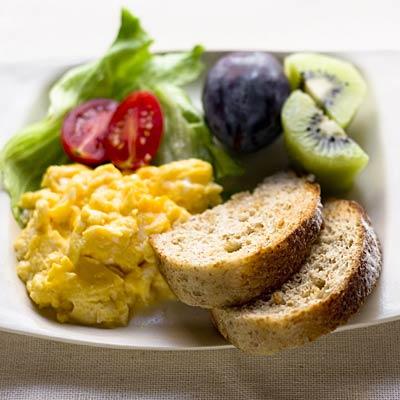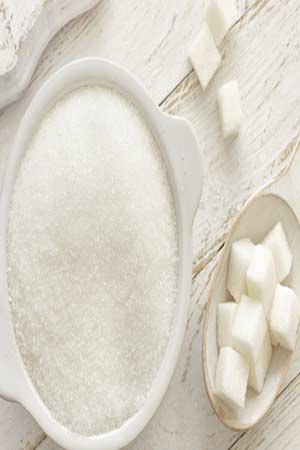The Four Main Ingredients For Transforming Your Body
So you want to change the way your body looks, tone up, and lose that unwanted baggage around your midsection and hips. Think you’re going to diet your way there or just cut calories and do a bunch of cardio, think again. There’s only one sure fire way to see a body transformation and it includes four main components that you must incorporate or you’ll likely end up in frustration.
There are no shortcuts to changing your body composition. It requires changes in your lean muscle mass, metabolism, hormonal balances, and a host of other factors. In short you need all the pieces of the puzzle to come together before you can see the kind of jaw dropping results you’re looking for.
After years of trail and error and countless research hours as a fitness coach and certified Charleston personal trainer I have found that any successful body transformation program is built around four key elements. They are as follows; cardiovascular exercise, a concern for muscle, supportive nutrition and proper progression.
It’s important to understand that you must have all four components in place to see long-term, lasting results. The majority of quick-fixes only focus on one piece of the puzzle and that’s why they ultimately fail. Think about some of the different fat loss solutions you may have tried in the past. How much discussion was there about exercise in the Atkins diet? How much real and meaningful information about nutrition did you find with the last workout video you purchased?
You see if you’ve tried any number of these so called solutions and ultimately failed it’s not your fault! You didn’t fail…the program failed you because it likely only gave you one piece of the puzzle.
Key Component #1: Supportive Nutrition
There’s no question the foods you eat will determine whether your body is in a “fat burning” or a “fat storing” state. I want you to begin looking at food as having a drug like effect on your body. Different foods have different impacts on the hormonal systems of your body. For example, eating a meal high in carbohydrates causes blood sugar (glucose) levels to get high fairly quickly signaling the release of insulin. In the presence of insulin your body doesn’t have the ability to burn fat for energy. Not many people know this but it’s a fact.
Choosing the right foods really does make all the difference. The nutrition strategies I teach my clients are centered on “naturally low” carbohydrate diets consisting of lean proteins, fruits, vegetables, nuts, seeds, and healthy omega-3 fats, also known as a Primal Blueprint diet. The typical person looking to lose weight has low insulin sensitivity or insulin resistance and will find it difficult losing weight with even small amounts of starches and grains.
Key Component #2: A Concern For Muscle (Resistance Exercise)
While cardiovascular exercise does increase momentary metabolism, resistance exercise helps keep it going for hours. The reason is simple…muscle is metabolically active tissue and needs energy (calories) to function.
When fat is burned, it actually has to be released into the bloodstream and shuttled into a muscle cell where it is burned as fuel. Muscle, therefore, is literally the “fat burning furnace.” If you increase muscle mass, even slightly, you increase caloric burn not only while you exercise but throughout the rest of the day as well.
The mitochondria of a muscle cell is the ONLY place your body can burn fat as fuel. That’s important to remember. Now doesn’t it make sense that if muscle is the only place you can burn fat that the more metabolically active lean muscle you have the more fat you can burn?
Don’t believe any of the so called “scientific evidence” that tells you increased lean muscle has minimal effect on fat loss. While it is true increased lean muscle has a small effect on your overall basal metabolic rate, it’s a mistake to believe it won’t help you be better at releasing and burning fat.
Maybe it’s just a coincidence that the most muscular individuals are also the leanest. I don’t think so. Forget what you may have heard or read, success leaves clues. The most effective type of resistance training for fat loss is something that’s called burst training .
Basically what this entails is doing a group of exercises with short bursts of all out effort followed by brief periods of rest. The best exercises are compound weight training or body weight movements like presses, squats, rows, etc. You want to work the large muscle groups with high intensity effort then briefly rest before repeating the circuit again.
Burst training is so effective because it triggers a hormonal response in your body to secrete powerful fat burning hormones like nor-adrenaline, growth hormone, testosterone and others. Traditional low-moderate intensity weight training or cardio does not trigger the same hormonal response. What you’re doing is signaling a primal “fight or flight” response by your adrenal glands through the high intensity burst.
I’ve built an entire business model around this concept and have seen hundreds of individuals change their bodies with the methods. The workouts aren’t easy as they’ll push you to work at all out effort. But the returns are worth every ounce of sweat.
Key Component #3: Cardiovascular Exercise
While cardiovascular exercise is not the only activity needed for fat loss that some think it to be, it certainly plays an essential role. The real reason why it’s so important may come at a surprise to you. Most people think they need to do cardio because it burns calories. While this is true it’s not really about the calories. When you look at stored body fat being what it really is….stored energy you can begin to see why the efficiency of your heart and lungs plays such an important role.
You need cardiovascular exercise to improve the efficiency of your heart and lungs so you can better transport nutrients and oxygen through your body. When you look at the Krebs Cycle and how your body produces energy you’ll find oxygen plays an essential role in the burning of fat.
In fact, you can’t burn fat for fuel at a cellular level without oxygen. Now doesn’t it make sense that if you must have oxygen to burn fat that the more efficient you are at delivering oxygen the better you’re body will be at it?
The first role of cardiovascular exercise will be to improve the efficiency of your heart and lungs through moderate intensity “aerobic exercise.” You must get your body efficient at absorbing oxygen if you want to really turn up the thermostat on your fat burning engine later. Higher intensity cardio routines that really start burning fat are only effective once you’ve established an aerobic base.
Individuals just starting an exercise program will want to develop this “aerobic base” by completing moderate intensity cardiovascular exercise during their first few weeks. You can accomplish this by doing cardio (5) days per week at (30) minutes each session. You can begin building this base with as little as 12 minutes of aerobic exercise daily in your target heart rate zone. So don’t worry if you can’t do 30 minutes in the beginning, you can always work up to it.
Key Component #4: Proper Progression
The fourth component is proper progression which is nothing more than changing your exercise routine in a way that creates a new stimulus in your cardiovascular and neuromuscular systems. Not having proper progression is the biggest mistake I see people making with their exercise routines. Walk into any health club and you’ll undoubtedly find someone doing the same sets and reps scheme that they’ve been doing for months. They think in their mind that they’re working out but often complain that they don’t see results. The reason is simple. They’ve given their body a workload to complete and it adapted.
Your body will adapt to any given workload over time. In order to see results you must change the intensity of your workouts. You can do this by changing the load (weight), rest, reps, duration and any number of factors. The key thing to remember is that you MUST give your body a new stimulus if expect it to change.
-
Stretching for a Higher Intensity Run
When you are running on a treadmill, it
-
Start the Never Ending Journey to Losing Weight
Diets that guarantee lots of lost pounds
-
Healthy Eating Facts To Follow Than Can Stop You From Becoming Fat
Were all aware that staying fit and heal
-
Diet And Exercise Program For Permanent Weight Loss Part 1
To lose weight sensibly, you must first have an understanding of your
-
5 Tips to Kick Bad Eating Habits to the Curb
Are you guilty of skipping breakfast, ordering takeout, get
-
Health & Weight Loss? - Dont Forget Acai!
Ok! Here it is some simple solutions to
- DON'T MISS
- 3 Reasons Why Eating Breakfast is Crucial to Losing Weight
- Fantasia: How She Had To Lose To Win
- Flatten Your Stomach With A Tummy Tuck Or Abdominoplasty
- 3 Hormones That Can Influence Weight Loss
- Reducing Belly Fat - How To Reduce Body Fat Just Like I Did
- Lose Weight by Eating Carbohydrates
- How Gain Muscle Diets Can Work To Improve Your Workout
- Your health is influenced by what your father ate prior to your birth
- Can God Help me Lose Weight
- Christopher Monkton On Global Warming: A Convenient Truth




